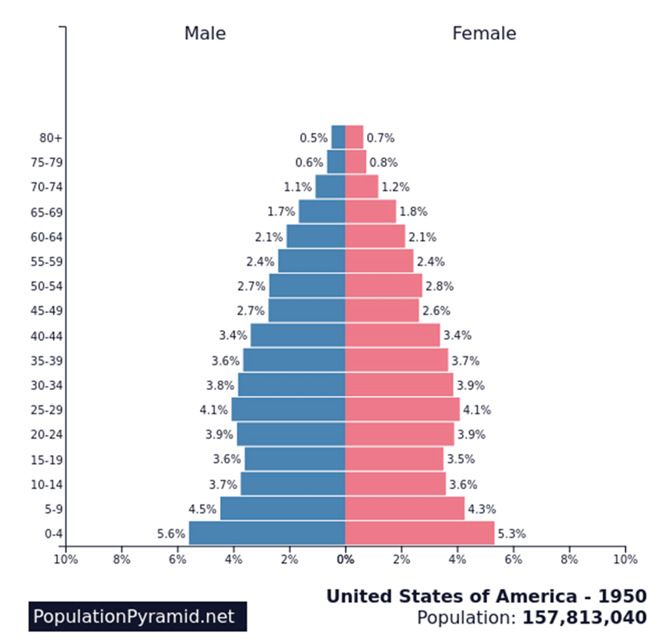The chart doesn’t show the full progression. In 1940 the Social Security system had 159.4 workers per beneficiary then went off the rails quickly. By 1945 the ratio was down to 41.9 and a decade later was in single digits. A variety of measures, from higher tax rates to (slightly) raising the retirement age, have flattened the trajectory but it is still slipping lower.
We usually think this is a result of the baby boom generation turning 65, and that’s a big part of it. But rising life expectancy is equally and maybe more important. People now live longer, which lowers the ratio and means they collect more years of benefits than previous generations.
Let’s stop here and think about this “retirement” concept. It is, in the history of man, relatively new. For millennia, the idea that a physically able person of “non-royal” blood would simply stop working and enter a life of leisure was unthinkable. You worked as long as you could, declined quickly and then died. Very simple and, more to the point, financially sustainable most of the time.
Note also, in much of the world “retirement” is still a dream. Even the elderly are expected to contribute something to the community, as long as they are able. What we have in the developed countries is still not the norm globally.
It was not coincidence that the modern concept of retirement developed alongside the Industrial Revolution. Technology made food production far less labor-intensive, reducing the need for less-productive older people to contribute. Societies around the world decided to let the oldest members take some final time off before their end. A good and humane practice, I think, one I think we should continue as long as we have the elderly.
However, it has limits. I don’t know of anyone who, when the retirement systems were created, thought it made sense for average people to spend the last 30 percent or 35 percent of their lives in retirement, at the broader society’s expense. They would’ve expressed that concept in words along the lines of, “That’s nuts!” And yet we are trying to do it. No surprise, the seams of our retirement dream are beginning to unravel.
From Pyramid To Rectangle
The problem is not simply that there are so many baby boomers. It is that we have so many baby boomers and they’re living longer than previous generations did. Not in every single case, obviously, but the aggregate difference is dramatic.
We can illustrate this with “population pyramid” charts, which show age distribution in graphic form. Here’s the United States in 1950. That widest bar at the bottom is the beginning of the baby boom, including me.









